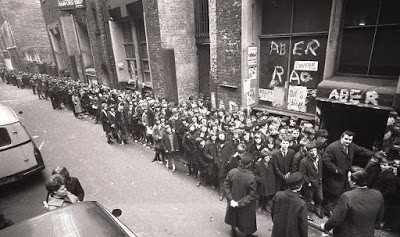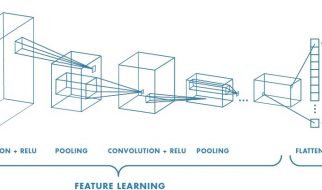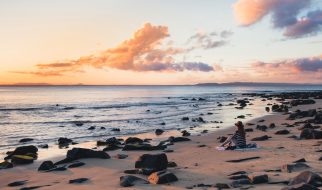We were the best live band in the world before we were famous. Nobody could touch us
John Lennon.
The Beatles first made their name as a live band. Their residencies in Hamburg and Liverpool earned them devoted local fan base before they were even close to obtaining a record contract. The band George Martin auditioned at Abbey Road in 1962 displayed very limited musicianship and unpromising original material. What they had was energy and charisma ? qualities that had thrilled live audiences. Martin sensed that these would compensate for rudimentary technique.
Four years later The Beatles had unprecedented mastery of the recording studio but their stage work, the keystone of their initial appeal had markedly declined. Put simply, the bigger they got, the worse they sounded live.
In small clubs like the Cavern they created an extraordinary rapport with their fans through the raw energy they produced on stage. As the venues got bigger, this intimacy dissipated. They became increasing remote figures producing a sound so poor that it was often difficult to distinguish one song from another.
The Beatles never formally gave up touring. They simply played the last contracted concert of their 1966 world tour in San Francisco and did not arrange any new dates. There was no public announcement.
In a 2016 interview promoting Ron Howard?s documentary Eight Days A Week: The Touring Years, Ringo Starr told Mojo: ?The Beatles were never gone. And they could have come back.?
They did, of course,later return to the stage for one celebrated impromptu swansong ? the rooftop concert at the Apple Headquarters in Saville Row. But in their final four years as a band prospect of The Beatles going on tour became increasingly remote.
There were three key reasons why they stopped playing live: poor sound, exhaustion and unease about their personal security. All three came to a head during their chaotic 1966 World Tour.
1. Poor sound quality & concert organisation
The Beatles first tour of America in February 1964 consisted of two television appearances and two concerts: in Washington & New York. Their return for a full tour in August created an unprecedented demand for concert tickets.
To meet this demand, local promoters arranged the biggest venues available. In most cities the only auditoriums physically capable of accommodating tens of thousands of fans were sports stadiums. Unfortunately, this created major sound problems as amplification technology was not yet ready to fill these vast spaces. In many cases the (distorted) sound came through the stadium?s PA system and was a sonic mess. It was also incapable of competing with the incessant screaming.
On stage, The Beatles were reliant on their own puny amplifiers. Crucially they could not hear each other play. Ringo Starr could only keep the beat by watching the gyrating rear ends of his fellow band mates. John Lennon later described how this adversely affected their musicianship:
In 2016 Giles Martin (son of George) remastered tapes from the 1965 tour for the soundtrack of the new documentary ?Eight Days a Week?. The sound is far superior to that heard by fans at the time ? or indeed by The Beatles themselves. As Paul McCartney has said,
?We couldn?t hear ourselves when we were live, as there was so much screaming going on.?
One option might have been to have played at least some smaller gigs ? this is what Paul McCartney did with Wings a decade later. Even by the summer of 1963, however, The Beatles were trapped by the scale of their success. A return to the Cavern in August proved that it was no impossible to return to intimacy of their club-playing days.
 Fans wait queue for Beatles final gig at The Cavern
Fans wait queue for Beatles final gig at The Cavern
2. Exhaustion
By 1966 The Beatles had endured nearly three years of relentless Beatlemania. Elation at their initial success had soured as they faced night after night of screaming ?I Want to Hold Your Hand? over the screams of teenage fans.
Nor did it help that John Lennon was never enthusiastic about rehearsing. Later he would take great umbrage when Paul suggested regular sessions to prepare for Magical Mystery Tour. ?We?re grown men!? he announced grandly.
The Beatles became increasingly self-conscious about their sloppy playing ? they were embarrassed by their famous performance on the Ed Sullivan Show, for example. Amidst all the adulation, they knew they were a pale shadow of the live band that had thrilled audiences at the Star Club and the Cavern.
Of course, most of the girls who attended Beatles concerts were not there to appreciate the subtleties of the musicianship. Whatever the band played was good enough. This mean that there was little incentive for them to put in the work necessary to improve.
3. Security concerns
The Beatles first came to the US came four months after the Kennedy assassination. From the outset they were uneasy about threats to their safety and the ?bigger than Jesus? controversy made touring the US increasingly tense.
Live concerts were potentially dangerous as security was often chaotic. A particularly unpleasant experience in the Philippines heightened this sense of vulnerability.
On August 29 1966, The Beatles played the last concert of their US tour ? it would prove to be their last ever scheduled concert.
Up on the Roof ? The Final Beatles Gig
The Beatles Teaching Pack (3.99)

